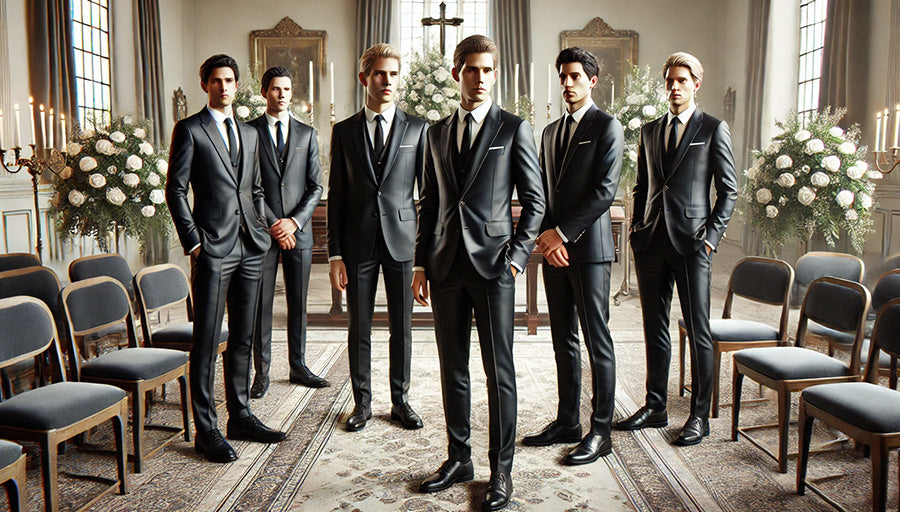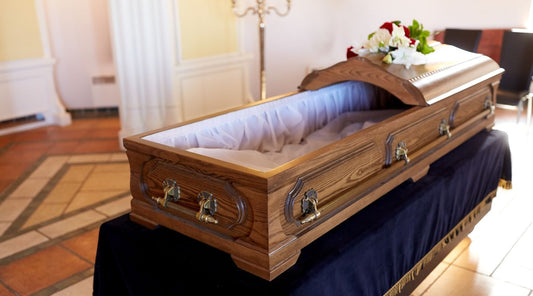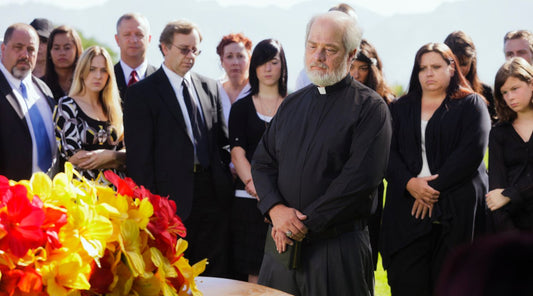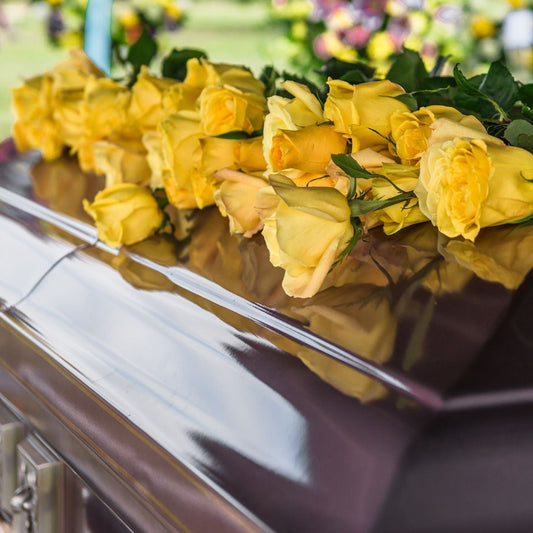
Men's Funeral Attire Guide: Respectful Dressing for Every Occasion
Choosing the proper attire for a funeral is more than just a matter of fashion; it’s a sign of respect for the deceased and their loved ones. Your dress reflects your awareness of the occasion’s solemnity and sensitivity to those in mourning. However, knowing what to wear can be challenging, especially with varying expectations across different cultures, religions, and even types of services. Whether you’re attending a traditional funeral, a memorial service, or a celebration of life, your outfit should strike the right balance between formality and personal expression.
This guide offers helpful advice on what men should wear to funerals and other end-of-life events, considering cultural norms, seasonal considerations, and modern trends. By understanding these guidelines, you can make appropriate choices that show your respect for the occasion while also reflecting your personal style in a thoughtful and considerate way.

General Guidelines for Men’s Funeral Attire.
When attending a funeral, men should prioritize respect and solemnity in their attire. A dark suit serves as the foundation of appropriate funeral wear. Black remains the traditional choice, but dark gray and navy suits also convey the right tone. These colors reflect the seriousness of the occasion without drawing unnecessary attention.
Pair the suit with a classic white or light-colored dress shirt. A well-fitted shirt ensures a polished look and complements the dark suit perfectly. While subtle patterns on shirts can work in less formal settings, a plain shirt keeps the focus where it belongs—on honoring the deceased.
A tie adds a necessary layer of formality. Opt for solid colors or ties with understated patterns, such as muted stripes or small dots. Avoid bright colors or bold designs; they can seem out of place at a funeral. The tie should harmonize with the suit and shirt, contributing to an overall look of quiet dignity.

Footwear is another key aspect to consider. Black or dark brown formal shoes, like oxfords or brogues, are ideal. These shoes should be polished and in good condition, reinforcing the ensemble’s respectfulness. Casual footwear, such as sneakers or loafers, does not belong at a funeral and should be avoided.
Accessories should remain minimal and subdued. A simple watch or discreet cufflinks suffice. If hats are culturally appropriate, choose one that complements the overall attire without drawing attention. The goal is to maintain a somber appearance that shows reverence for the occasion.
By adhering to these guidelines, men can dress in a way that respects the solemnity of the funeral, offering silent support to the grieving family. Each outfit element, from the suit to the shoes, plays a part in conveying this respect.
Cultural and Religious Considerations
Cultural and religious traditions significantly influence what men should wear to funerals, making it essential to understand the expectations specific to each community. At Christian funerals, dark suits and ties are typically the norm. Conservative attire reflects the somber nature of the service, and attendees should avoid anything flashy or overly casual.
In Jewish funerals, men often wear a yarmulke, or kippah, as a sign of respect. This small head covering, usually provided at the funeral, is worn throughout the service. The rest of the attire should align with general funeral guidelines—dark, formal, and understated.
Muslim funerals emphasize modesty and simplicity in dress. Men should opt for loose-fitting clothing that covers the arms and legs. In some communities, a prayer cap or kufi may also be appropriate. Light colors, such as white, often signify purity and humility, aligning with the tone of the service.
Hindu funerals present different expectations, as white is the preferred color. For Hindus, white reflects the belief in purity and the soul’s journey after death. Men might wear a simple white kurta with pajama trousers or a similar traditional outfit, ensuring the look remains modest and respectful.
At Buddhist funerals, simplicity again takes precedence. Men should choose plain, dark clothing, avoiding ostentatious accessories or bright colors. White may also be appropriate in some traditions, symbolizing mourning and respect.
It’s also not unusual for Hindu and Buddhist men to go shoeless at traditional funerals, particularly if the service is held in a sacred space, like a temple or the family home.
Understanding these cultural nuances ensures you dress appropriately, honoring the deceased and their family. Each religious tradition carries its significance, and respecting these customs through attire demonstrates thoughtfulness and sensitivity during difficult times.
Seasonal and Weather Considerations.
Seasonal and weather conditions play a crucial role in determining appropriate funeral attire. Opt for light, breathable fabrics like cotton or linen in the summer. These materials keep you cool while maintaining the necessary formality. Choose lighter suits in dark colors, and ensure your shirt remains crisp and comfortable. Despite the heat, resist the temptation to dress too casually; respect for the occasion demands a certain level of formality.
Winter funerals require a different approach. Layering becomes essential as you aim to stay warm without sacrificing decorum. A dark overcoat, such as a wool or cashmere blend, complements a formal suit while providing insulation. Pair this with a scarf in a subdued color, and wear leather gloves for a polished appearance. Ensure that your footwear is formal and functional, particularly if the weather is less than perfect.
Rainy weather introduces additional considerations. Waterproof outerwear, such as a classic trench coat, helps you stay dry without compromising your look. Choose a coat that’s tailored and dark in color to match the formality of your suit. An umbrella becomes a practical necessity but avoid bright colors or patterns. Stick to a simple black or navy umbrella that doesn’t distract from the somber atmosphere.
Outdoor events present their own challenges, especially if the terrain is uneven or muddy. In such cases, select sturdy yet formal shoes that can handle the elements, ensuring you remain respectful and practical.
Attire for Different Types of End-of-Life Events
Different types of end-of-life events require varying levels of formality in men’s attire. Traditional funerals call for the most formal dress code. A dark suit with a tie remains the standard, reflecting the occasion’s solemnity. This formal approach shows respect for the deceased and their grieving family.
Memorial services often allow for slightly more relaxed attire. While a suit is still appropriate, you might choose a less formal option, such as a blazer with dress pants. Consider the setting and the family’s preferences when making your choice. Indoor services generally demand more formality, while outdoor or casual locations might permit more flexibility.
Wakes and visitations typically fall somewhere between formal and semi-formal. Depending on the atmosphere, a dress shirt with or without a tie may suffice, paired with dress pants or a suit. Pay attention to cues from the invitation or the family’s known preferences to guide your attire.
Celebrations of life offer the most flexibility in dress code. These events often encourage attendees to reflect the personality and interests of the deceased. You might opt for smart casual attire, possibly incorporating a subtle personal touch, like a tie in the deceased’s favorite color. However, it is important to balance personal expression and the event’s respectful tone.
Although virtual funerals are becoming more common, they still require attention to attire. Dress as you would for an in-person service, ensuring that your appearance on camera conveys the same respect.

Modern Trends and Personalization
Modern funeral attire trends seem to be shifting towards more personalized and less rigid choices while still honoring the occasion's solemnity. Men now have greater freedom to express personal style, but respect and discretion remain paramount. Traditional dark suits are still the norm, but incorporating subtle variations, such as a lightly patterned tie or a colored pocket square, has become more acceptable.
These small touches allow for individuality without detracting from the overall respectful tone. Personalization can also reflect a connection to the deceased. For example, wearing a tie in the deceased’s favorite color or a lapel pin that symbolizes a shared interest adds a meaningful, personal layer to your attire.
However, balancing these modern touches with the occasion’s formality is crucial. Overly bold or flamboyant choices can appear out of place and risk distracting from the gathering’s purpose. When in doubt, opt for subtlety. The goal is to express personality in a way that complements the event's respectful atmosphere.
Cultural sensitivity should also guide personalization. Ensure that your choices align with the family’s traditions and the overall expectations of the service. Thoughtful, understated personalization can enhance your attire, adding depth and meaning without overshadowing the occasion.

Common Mistakes to Avoid
Men often make common mistakes when choosing funeral attire, undermining the occasion’s solemnity. Overdressing can be as inappropriate as underdressing. Wearing a tuxedo or overly formal attire might seem respectful but can quickly draw unwanted attention. On the other hand, dressing too casually, such as wearing jeans or an untucked shirt, shows a lack of consideration for the event’s significance.
Inappropriate color choices are another frequent misstep. Bright colors, flashy patterns, and bold accessories can distract from the gathering’s purpose. Sticking to dark, muted tones helps maintain the focus on honoring the deceased and supporting the grieving family.
Excessive accessories also pose a problem. While a simple watch or wedding band is acceptable, piling on jewelry or wearing loud accessories detracts from the respectfulness of the outfit. Minimalism should guide your choice of accessories, ensuring nothing competes with the overall somber tone.
Finally, ignoring the family’s wishes is a severe mistake. If the family specifies a dress code, such as wearing a particular color or style, follow it closely. Disregarding these requests not only disrespects the family but also disrupts the unity of the event. Always prioritize the family’s preferences when making attire decisions.
Dressing appropriately for funerals and other end-of-life events is a powerful way to show respect and empathy during a difficult time. By understanding and adhering to the guidelines outlined here, you can ensure your attire reflects the occasion’s seriousness while honoring the grieving family’s cultural and personal preferences. Whether you lean toward traditional or modern trends, the key is maintaining a balance of formality, subtlety, and sensitivity. Thoughtful choices in your attire convey your respect for the deceased and offer quiet support to those who are mourning.




